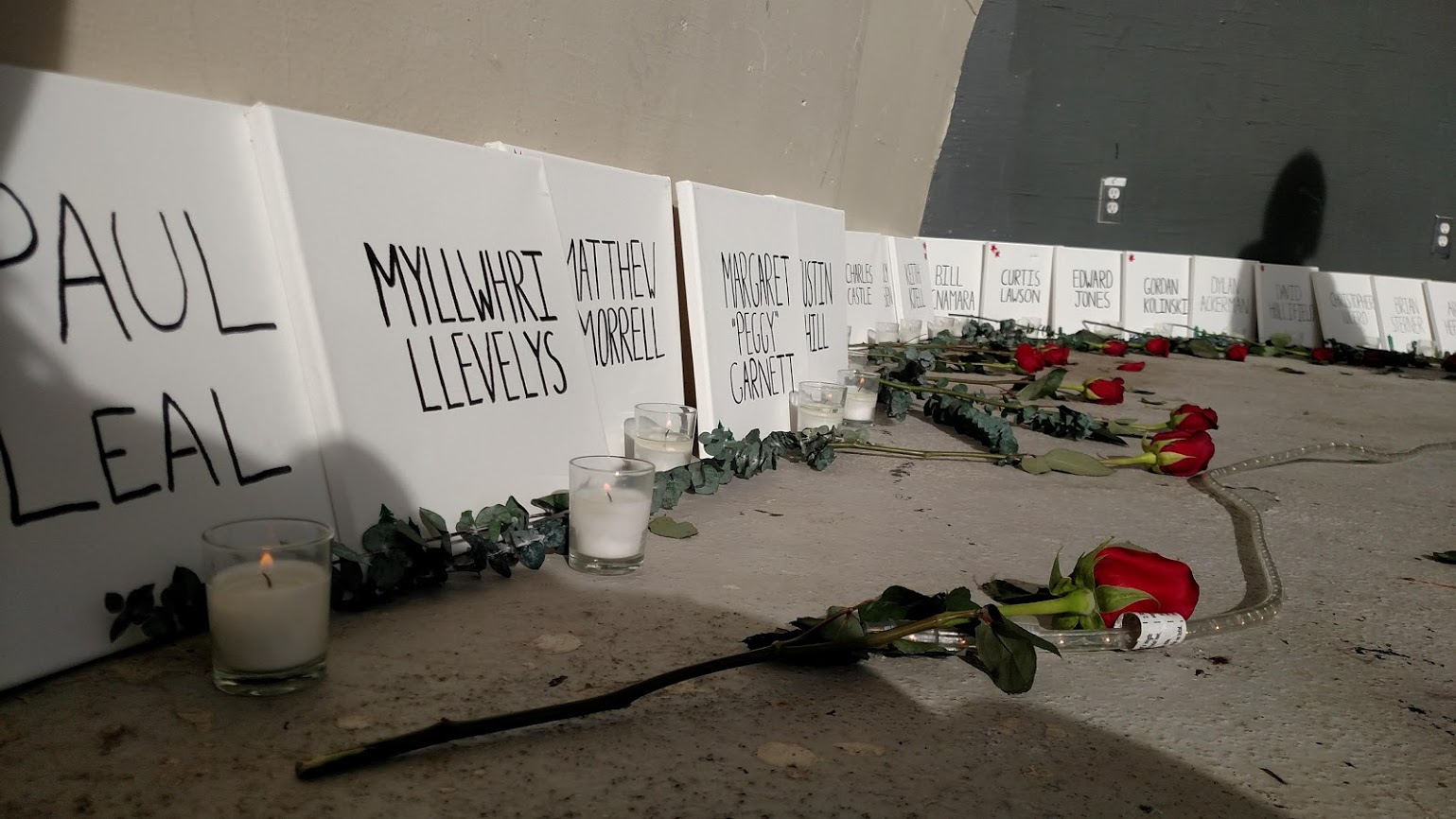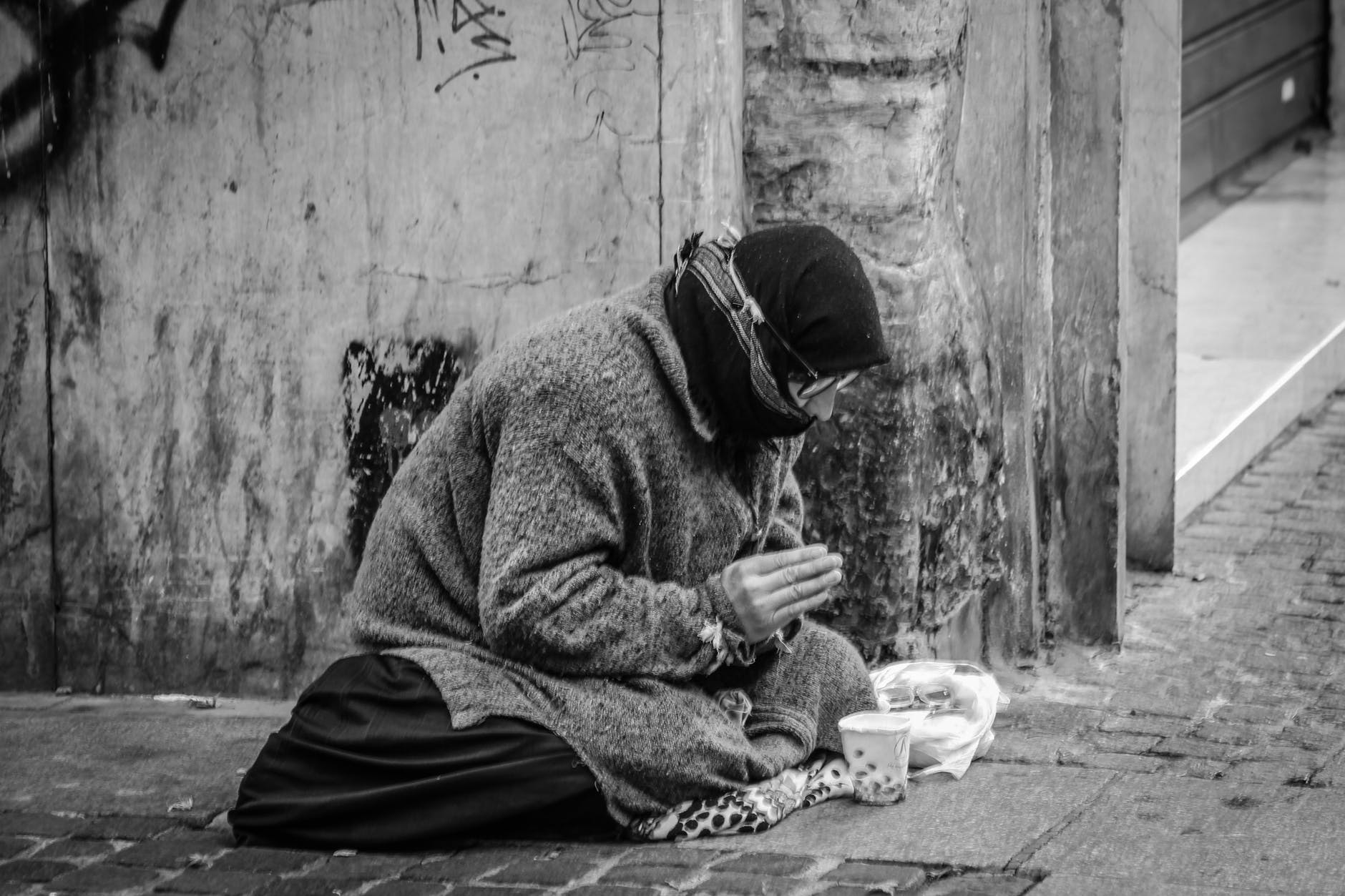Officials pledge action as homeless deaths soar in Boulder

Saturday, Dec. 21, 2019
Forty-eight names were written on 48 plain white canvases. Forty-eight roses were laid upon the bandshell stage in front of them, each one a token of remembrance for an unhoused person who died in Boulder over the past year.
There are not usually so many roses, so many canvases at the annual event sponsored by the city’s Human Relations Commission. In fact, there are typically half as many names on the list of the dead complied by Boulder nonprofit Bridge House each year.
Exactly why deaths are increasing remains unclear, though a forthcoming annual report from the county coroner may shed some light on the situation. The phenomenon is not restricted to Boulder, said Scott Medina, Bridge House’s volunteer coordinator: Denver also saw a rise. Longmont’s HOPE earlier this month released its own list of 10 local unhoused deaths.
Whatever the cause, the high numbers prompted renewed promises from activists and elected officials to expand services and challenge controversial policies.
I hope “that we all do what we can in this next year so a year from now, we have fewer names up here,” councilman Aaron Brockett said after reading a declaration making Dec. 21 National Homeless Persons’ Memorial Day in Boulder.
In response to followup questions, Brockett said he intends to again propose that emergency shelters be open all winter long. He and then-Mayor Suzanne Jones made the suggestion earlier in 2019 after attending last year’s memorial.
This year, Brockett was joined at the event by fellow council members Rachel Friend and, briefly, Mayor Sam Weaver. Following the service, Brockett, Friend and HRC Chair Nikhil Mankekar sent a joint, public email requesting that staff research possible explanations for the sharp uptick in deaths.
Council is slated to receive an update on the city’s efforts to combat homelessness at its Jan. 7 meeting. Staff will work on collecting data regarding deaths, Housing and Human Services Director Kurt Firnhaber wrote in a reply email, but the information won’t be ready in time for the Jan. 7 meeting.
The most current data on “transient” deaths is from the coroner’s 2018 annual report. Between 2011-2018, 81 unhoused persons died in Boulder; 122 in the county as a whole. Boulder averaged 10 deaths per year; Longmont, 3.875 and Boulder County as a whole 15.25. Hypothermia was a factor in 18% of deaths during that time; alcohol and drugs was the leading cause of death.
It’s not clear how much their unhoused status contributed to the deaths of those remembered Saturday. There are often multiple factors at play said Darren O’Connor, an attorney and longtime advocate for the unhoused, from alcohol and drug use to chronic illness. Whatever the underlying cause, “being outside exacerbates it in every way.”
Impacts of homelessness are “cumulative” over a lifetime, he said, one of the reasons unhoused people die so much younger. People without stable housing can expect to live anywhere from 10 to 30 years less than housed populations, according to numerous studies in Europe, Canada and large American cities.

A report from University of Colorado Denver professor Tony Robinson suggests that health outcomes are worsened by policies that put unhoused residents in frequent contact with police. Robinson found a 71% higher rate of frostbite, a 39% higher rate of dehydration and doubling of heat stroke among homeless persons who had been warned or ticketed under Denver’s camping ban.
The same population reported deteriorating mental health with 57% higher frequency; poor and interrupted sleep (49% reported two hours or less of sleep at one time); and constant anxiety. Many would intentionally seek out more isolated places to sleep, greatly increasing their chances of being robbed, assaulted or, in the case of women, raped.
To that end, Denver Homeless Out Loud — which collaborated on the report — on Friday sent a letter to Denver’s city council demanding an end to the camping ban in the wake of a Supreme Court action on a similar law in the Ninth Circuit. The court on Dec. 16 let stand a ruling that such laws violate Eighth AmendmentChange made to existing documents, resolutions, or ordinances rights against cruel and unusual punishment.
Denver’s camping ban is being challenged in court right now, Westword reported in October. Homeless Out Loud argues that the city should repeal the ban rather than face a long and costly court case in which the outcome has already been ruled on by the nation’s highest court.
“This case will likely be appealed to higher courts and cost the City of Denver millions of dollar (that could be spent on housing) and years to defend unless you, Denver City Council, end all of this immediately by voting to repeal the camping ban,” the group wrote.
Boulder could find itself in a similar position if a lawsuit were brought forward, O’Connor said. The city, part of the Tenth Circuit, is not legally bound by the ruling, but Connor believes it puts the burden on Boulder to prove its ban is not unconstitutional.
“If somebody sues, (the city) start(s) in that hole,” he said. “This is a bellwether moment.”
Councilman Brockett did not indicate that the camping ban was something city council would take on, preferring to focus on expanding winter sheltering. Councilwoman Friend, during the campaign
, said she would support that policy change. Councilman Adam Swetlik went further, criticizing the camping ban itself.
The four incumbent council members all voted against keeping the shelter open for more nights when Brockett proposed it in January. They and staff argued that every available resource should be used to provide permanent housing. Providing shelter for every night of the winter season — October 1 to April 30 — would cost an estimated $40,000
extra annually. That would provide one year of permanently supportive housing to two individuals.
Firnhaber and other staff continue to make controversial claims that a shift from all-winter sheltering actually lowered deaths because fewer people were seeking shelter in Boulder.
“While correlation is not causation, offering more shelter has not led to fewer deaths in the community historically and has not helped people get to solutions that truly address the serious health and mental health issues that put them most at risk,” Firnhaber wrote in a Nov. 21 public email. “It is notable that during 2018, the first full year of the new Homeless Solutions for Boulder County (HSBC) system, and the year we returned to weather-triggered overflow shelter, deaths among people experiencing homelessness hit a 5-year low in Boulder County and the City of Boulder.”
O’Connor and others have criticized using those figures because the sample size is too small to draw reasonable conclusions, and conditions vary greatly from one year to the next. Perhaps this year’s long list of the dead will cause city officials to shift their thinking, O’Connor said.
“The sample size just doubled.”
Those remembered Saturday:
Brian Karvakko
David Hollifield
Darryl Pickett
David Turner
Dylan Ackerman
Gail Jenkins
Gy Houghton
James Garcia
Jeffrey Houston
Jose Mejia
Luther Self
Raymond Zabielski
Robert Dent
Ronald Bauer (See also: Longmont Times-Call)
Thomas Sturgess
Wayne Hollenback
Bill McNamara
Carly Jepsen
Edward Jones
Gordon Kolinski
Justin Hill
Kari McGuire
Keith Kjell
Margaret “Peggy” Garnett
Myllwhri Llevelys
Paul Lael
Source: Boulder Bridge House
Longmont-area memorial list:
Starr Davis
Gail
Charles Kunz
Source: HOPE
*Some names appeared on both lists
Read more from the Daily Camera
— Shay Castle, boulderbeatnews@gmail.com
,
Want more stories like this, delivered straight to your inbox? Click here to sign up for a weekly newsletter from Boulder Beat.
Homelessness Boulder Bridge House city council city of Boulder Denver Homeless Out Loud Homeless Solutions for Boulder County homelessness HOPE Human Relations Commission human services Longmont National Homeless Persons Memorial Day unhoused Westword


Regarding “People without stable housing can expect to live anywhere from 10 to 30 years less…”
In Colorado the figure is very close to 30, as searching for “average age of homeless death in Colorado” shows from many sources.
We are on the high end of the differential likely because of the cold.
I displayed a sign during the 2017 Council Retreat saying, “Boulder’s soul: colder than a witch’s teat”
I recognized three of the names on Boulder’s list of homeless deaths in 2019; two of them I knew fairly well from my time as a homeless camper in north Boulder around the area of N. Broadway & U.S. 36. (The third I knew by his notorious reputation and also from police reports.) I won’t use their real names below. My direct knowledge ended around this time in 2017, when I entered a nursing home in another city for long-term care.
The homeless woman had been in the Housing First program at 1175 Lee Hill, until she was either evicted for violent, drunken misbehavior a few years ago. She had continued drinking excessively all along — sobriety is NOT a requirement in anyone’s $250.000+ Housing First apartment — and last time I checked with residents there seven deaths had occurred on premisesr from alcohol-related causes since the place opened in late 2014. She managed to survive long enough to return to the streets, where she continued drinkng herself into an early grave. She “flew a sign” on the same corner as I did, and we often talked while sitting in front of a nearby business. Sober, she was quiet and pleasant enough company; under the influence, she once beat her boyfriend senseless and broke his nose, leaving blood splatters on the sidewalk there.
I don’t consider her negative experience at 1175 Lee Hill to be anything more than par for the course for almost all who enter that worthless HF program.
The homeless man had been flying a sign on the corner for as many years as I had, but he was frequently under the influence while doing so and passersby didn’t reward him for it. He resented my success as a sober and respectful beggar, and became quite bitter at times. He went so far as posting anonymous insults and threats on my blog and other websites where I left comments. I might never have known it was him, if he hadn’t staggered up to me one day and announced, “Max, I am George W. Hayduke!” (This was the false identity he used online, borrowed from the author Edward Abbey.) After briefly thinking about it, I shrugged and said okay.
His death comes as no surprise, although I don’t the details of it. I’ve watched so many homeless men and women die from alcoholism and/or drug abuse.
I’ve never seen any program promoted by local homeless shelter / services providers have a posiitve long-term impact — meaning restoring someone to sobriety for at least five years.
Thanks for your time,
Max R. Weller
Elms Haven Center
12080 Bellaire Way 809B
Thornton, CO 80241
Thanks, Max.
By chance did you know the Paul Lael on the list? I have taken to walking to the grocery store and asking folks I meet along the way if they need anything. I bought Paul iced tea on hot days. He was usually on Iris right by 28th, but a little down from the corner at the entrance to the Safeway plaza. I never got his last name.
Please and thank you.
-Shay Castle
No, I can’t recall Paul Lael, but then I’m not good at putting names together with faces. I gather that there are more homeless people drifting through Boulder now than ever before, staying sometimes for a year or two before moving on. Plus, many don’t go by their legal names at all . . . And I wasn’t one who liked to hang out with other homeless people very much, anyway.
Happy Holidays!
Max